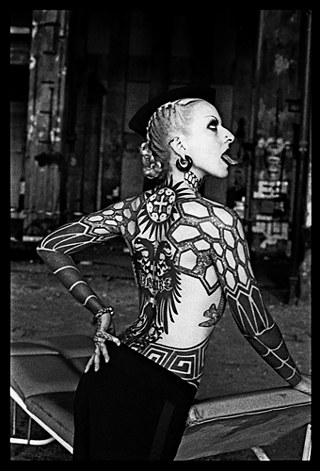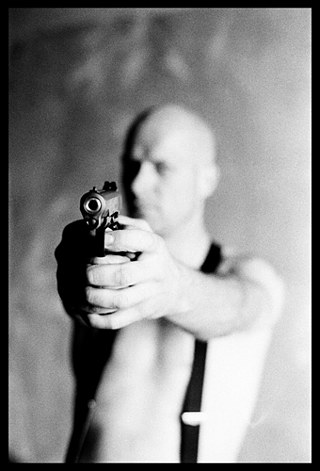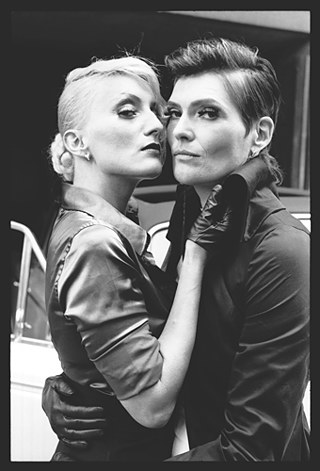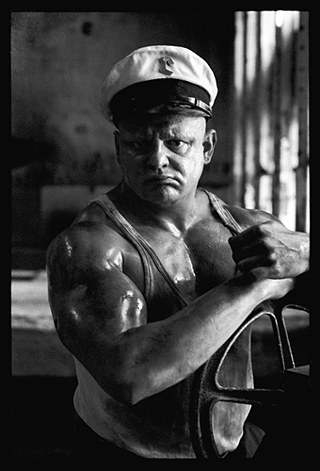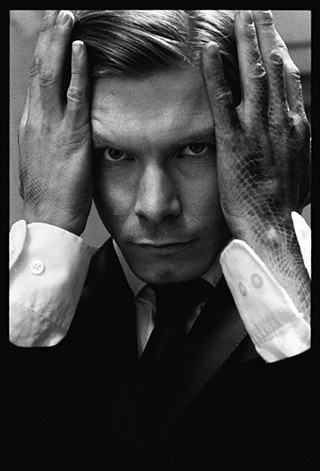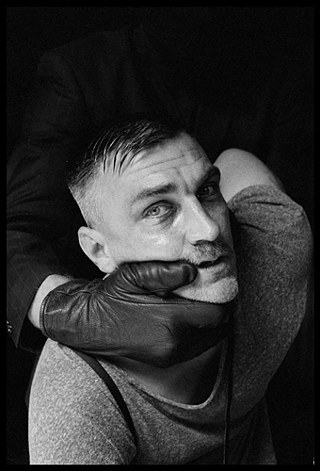A conversation with Sven Marquardt
Something that lasts
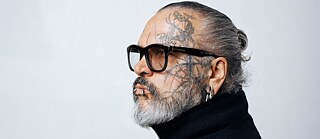
Berlin-based photographer Sven Marquardt has gained a great deal of national and international attention in recent years for his portraits. In the summer of 2017, he presented his work under the title BLACK BOX as part of an audiovisual installation in cooperation with the German producer and DJ Marcel Dettmann at the Montreal art gallery Never Apart. We spoke with him before his artist talk on 23 September 2017.
Black Box combines your pictorial worlds with the sounds of Marcel Dettmann, one of the most influential DJs and producers in recent techno history. How did this collaboration come about and what was it like?
Dettmann and I met for the first time at the legendary OSTGUT club in the late 1990s. The operators from that time opened the BERGHAIN only a few years later. A boy from the outskirts of Berlin who played records and a doorman who really didn’t want to take pictures anymore. I liked his sound even then: rough, dark, driving...
In 2007, I had started to photograph again and had Dettmann in front of my camera for the first time. Our symbiosis still works quite well. Sometime in 2014, Marcel came up to me somewhere and asked me if I could imagine doing something together: his sound, my pictures, a kind of installation was his vision and at first we didn’t know any more than that. ALL we knew was that we wanted to be positioned outside the club context. That was the vague plan back then.
A year later, I had just arrived in Sao Paulo for an artist talk when the then director of the Goethe-Institut Brazil, Alfons Hug, discovered me, pretty much by chance. Right then, Hug was curating an exhibition in Brazil, called ZEITGEIST Berlin, and part of the exhibition was dedicated to the Berlin CLUB CULTURE: BLACK BOX was born.
The people in Black Box meet us in expressive, staged portraits: young, old, models, outsiders – who are these people to you?
I’ve been photographing since the early 1980s. Back then, my camera became the stylistic and expressive means for my very own attitude about of life and that of the people I depicted. That probably hasn’t changed to this day, even if, of course, my environment / the protagonists have changed as well as, of course, the ZEITGEIST. What’s remained the same is that I’ve always only photographed people: friends, colleagues, companions, and always, always this moment in front of and behind the camera. Always open to one another. For certainly ten years I’ve seen myself arrive more and more in conceptual photography.
In your autobiography, you describe your younger days in the alternative scene of East Berlin: GDR (German Democratic Republic) and punk – how did that fit together?
Every society, every culture produces a counterculture and perhaps even more so when growing up under a dictatorship. I have lovely memories of my childhood / youth in East Germany, but at some point you begin to not just take things as given and that’s how a counterculture emerges. Today, the almost legendary scene around Berlin’s Prenzlauer Berg district was quite complex. At some point, I was a part of it. The East Berlin underground / the bohemia of Prenzlauer Berg has often been quoted – it was the Eighties. Punk and New Wave influences didn’t just stop at a wall made of stone and barbed wire. It was certainly a little risky, what we were doing back then, the way we lived, painting NO FUTURE on our leather jackets. Today, when I see photos from back then, I think, Ha-ha, weren’t we cute – young, rebellious, scowling. But perhaps this very naiveté saved us from worse things. And there were certainly worse things. A few years ago there was an exhibition about that era / this topic. The title: IN GRENZEN FREI (FREE WITHIN LIMITS). I believe it describes really well how we felt then, what was going on in our minds.
For people who have not experienced it themselves, it is often difficult to imagine: from one day to the next the GDR as a state no longer existed. How did you experience the fall of the wall and the time right after that?
The fall of the wall in 1989 – one of the most important moments in the history of German division – also meant loss to countless people, the loss of one’s own identity. Nobody knew this beforehand because nothing like it had ever happened before.
I threw myself into this new FREEDOM. Freedom? What does that even mean? That you can do and not do whatever you want and, above all, wherever you want? And what price might you have to pay for it exactly? Sometimes this concept still goes through my mind when I travel today, and that I probably also had to learn it.
At the beginning of the 1990s, I not only put my camera away, but probably also my pride in being an East German; in the scene, I nearly denied my origins.
Everything was gone/different and even I had identity issues at first. I was 27 and belonged to a generation for which everything was possible once again. I didn’t miss my camera. I shrugged that time off by saying I only needed the camera as a kind of crutch for unfulfilled wishes/longings. NOW everything was possible. I discovered the Berlin club scene and at some point, it discovered me.
Interest in Berlin, its history, as well as the diverse arts and club scene, has been unbroken for years. How do you experience this long-lived Berlin hype?
In 2014, I told a Berlin story using my life as an example in my autobiography DIE NACHT IST LEBEN (THE NIGHT IS LIFE). I was able to experience 25 years in a divided city and another 25 years after the fall of the wall. For me, Berlin is still home and, of course, so much has changed. But I still recognize this city and sometimes I regret it when things, houses, places disappear forever. I still recognize Berlin; my favorite corners, streets, neighbourhoods are familiar to me; only the players are, of course, simply different ones in many places. That’s NORMAL! And maybe corners that are very strange to me always were. Sometimes, when I return from my travels, from far-away foreign cultures, cities with millions of inhabitants, I look out the window just before the landing in Berlin Tegel and think, Damn! The plane must’ve been hijacked to Wuppertal – everything looks so small and peaceful. Then for a moment I cannot understand the whole Berlin hype at all. And when none of the staff speaks German in my favourite FASHION shops in Berlin, that upsets me a little. But those are just niches and it’s great that they exist.
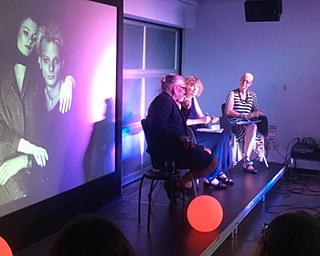
I don’t think I’m the type of person who sets off with huge expectations and not the kind who spends weeks ahead of time reading a guidebook at home. I always travel with my pictures; my focus beforehand is on the presentation of the pictures. I would like to fascinate the visitors with it as well as with the artist talks around the world. I never know beforehand how many people will be interested in it. Is anybody even going to show up?
But I’ve had such great encounters in so many places. Of course, I also hope THAT will be the case in Montreal. The rest is always an adventure, to embrace new, foreign things, this feeling of respect and curiosity. In a way, it may be a little like my work as a photographer. You can/must prepare, plan and organize so much in advance.
But that moment when you are facing one another is always exciting every time all over again. An adventure: that’s what I also hope to have in Montreal.
